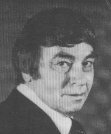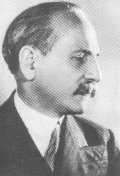
The Pianist's Talent
This book is essential for anybody exploring ways to enhance their ability to perform music.

In the book Harold Taylor (1925-2014) describes the teachings of Raymond Thiberge (1880-1968) on the piano.
Thiberge was a successful piano teacher who also happened to be blind.

After many years of teaching Thiberge came to the conclusion that his methods of teaching had very little effect on his student's outcomes.
His search for the deeper principles which foster good playing led him to similar conclusions to as F. M . Alexander, that a broadening and lengthening posture created the conditions for a well coordinated use of the body.
Here is are a few of the highlights and key points:
Chapter 1: Towards a Definition of Talent
This chapter starts by discussing the phenomena of infant prodigies.
Talent may be briefly defined as "the ability to perform without training."
Chapter 2: The Basis of Co-ordination
There are always two physical events (which occur during heightened coordination):
- Alteration in the balance of muscular activity
- Subtle change change in the total posture
Chapter 3: Expansion versus Contraction
When the conditions of expansion are present the conditions of contraction are in abeyance and vice versa.
Practicing 'relaxation exercises' is a temporary expedient which has no lasting effect if the student is in a contracting postural condition.
Chapter 4: The Researches of Raymond Thiberge
In this chapter Taylor considers the familiar situation of people who don't seem to be able to improve no matter how hard and long they practice.
Chapter 5: Are you well seated?
A firm seat is essential. In this chapter Taylor goes into quite some detail on how to achieve conditions of co- ordination.
It is in many ways also a concise summary of the Alexander Technique.
Chapter 6: Coordination with the keyboard
Taylor mentions the work of Tobias Matthay (the "rotationist") and James Ching (the "fixationist") as being examples of almost opposite approaches to the question of technique.
Both schools had a huge number of followers and both claimed to have discovered the basic principles of piano technique.
He then argues convincingly that instrumental technique is a gestalt, a whole which can never be fully explained or cultivated by the the reductionist approach.
Chapter 7: The teaching of Raymond Thiberge
The ability to make one sound by genuinely co-ordinated means is worth more than showing how to negotiate the supposed "difficulties" of the music by "end-gaining methods".
Chapter 8: Technical Notes on Some Chopin Studies
The basic thrust of this chapter is that by employing the correct means these etudes become easier and easier to play, but incorrect means will have the opposite effect.
This process is one which most students of instrumental performance will be familiar with I'm sure!
Chapter 9: Studying, Repertoire and Performance
Taylor arrives at three main categories of work for the musician:
- Improvement of coordination
- Acquiring of repertoire
- Practicing of selected works with a view to performance
Apparently the newer editions have two extra chapters.
I highly recommend this book as a thought-provoking exploration of the role of coordination in the development and expression of musical talent.